 Raul de Lara is a newly-minted bowl turner.
Raul de Lara is a newly-minted bowl turner.
Invited as a Penland Winter Residency Distinguished Fellow, the New York-based sculptor knew exactly what he wanted from his residency in the Penland wood studio: to learn everything he could about turning bowls on a lathe.
 Red oak logs from a fallen Penland tree await the lathe.
Red oak logs from a fallen Penland tree await the lathe.
A solo show coming up in May will feature Raul’s iconic botanical sculptures, supported by large, lathe-turned bowls and vases. Raul was a quick study, and it was a lot of fun to watch him get better and better, turning a pile of Penland red oak into a beautiful body of work.
 A work in progress in the Penland wood studio
A work in progress in the Penland wood studio
Raul’s Penland stay even included a trip to visit “wooden potter,” David Ellsworth, who lives an hour away. “I learned so much from David’s book and I use his signature tool,” said Raul. “I was able to show him some of my new work and we became friends immediately.”
Raul will spend the next two months preparing for his show at Reynolds Gallery which opens on May 3.
 Raul’s work on display at show and tell
Raul’s work on display at show and tell
We asked Raul to share a few tips about greenwood turning… Enjoy!
My advice would be to make sure to have friends around who can help you load/unload the big, heavy wet logs onto the lathe. For me, it was important to learn the basic techniques from David Ellsworth’s book before jumping into more intricate forms (like the ones you’ll see in my solo show). David also makes his own signature tool, which is what I used to make my work here at Penland.
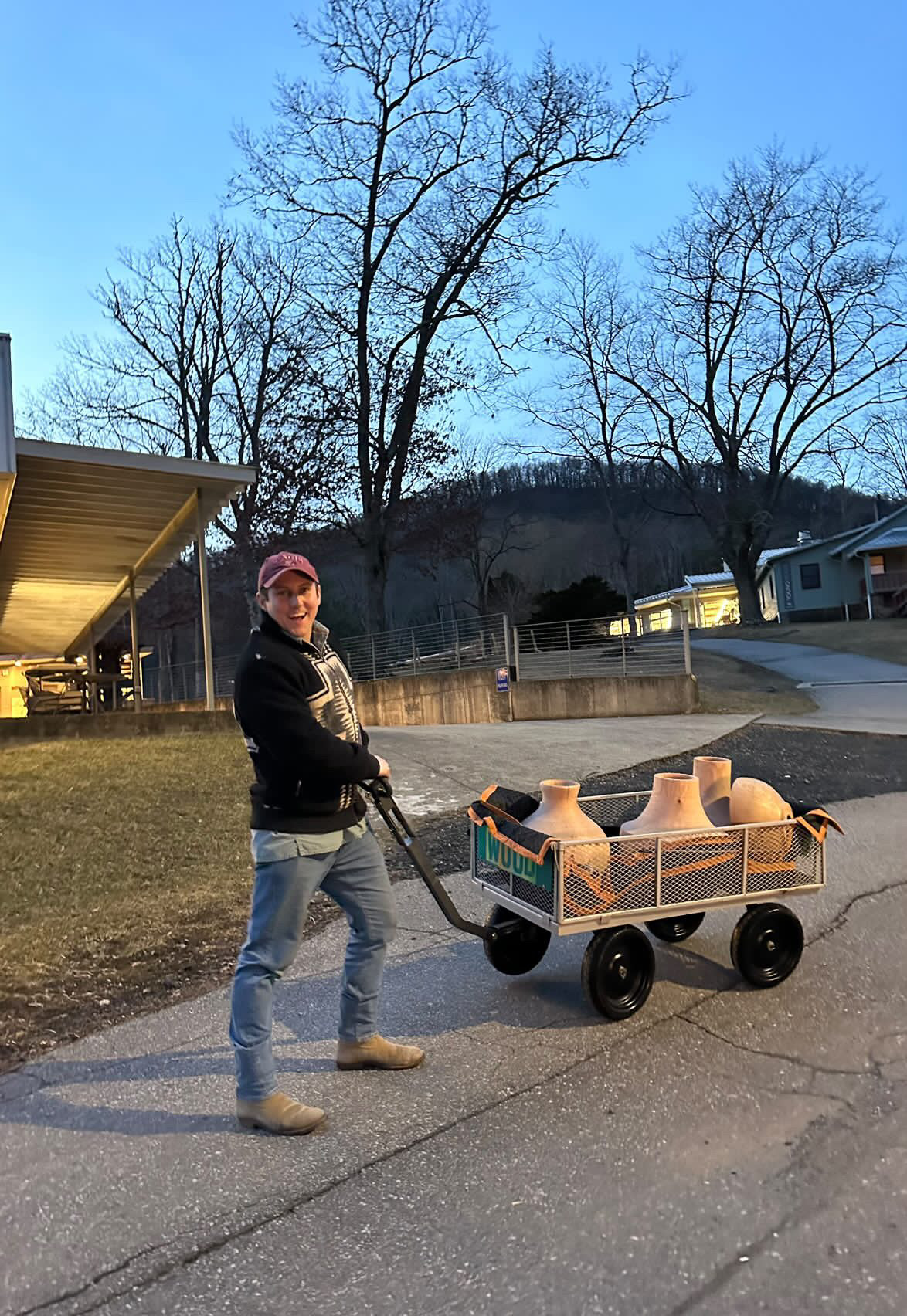 Raul makes his way up to show and tell with his newly-turned vessels.
Raul makes his way up to show and tell with his newly-turned vessels.
Thank you for sharing your practice with us, Raul! You can find more of his stunning work HERE.
Raul de Lara is a 2024 Penland Winter Residency Distinguished Fellow, one of eleven individuals receiving an award to attend the residency at no cost and with the support of a stipend, made possible with support from the National Endowment for the Arts.
Penland’s Winter Residency program is a short-term residency opportunity for artists seeking to work independently in one of our sixteen studios during Penland’s quiet season. This year, nearly 150 residents brought their studio practices to Penland’s teaching studios for for two to four focused weeks.
We are excited to share more Penland Winter Residency stories. Please stay tuned for more…


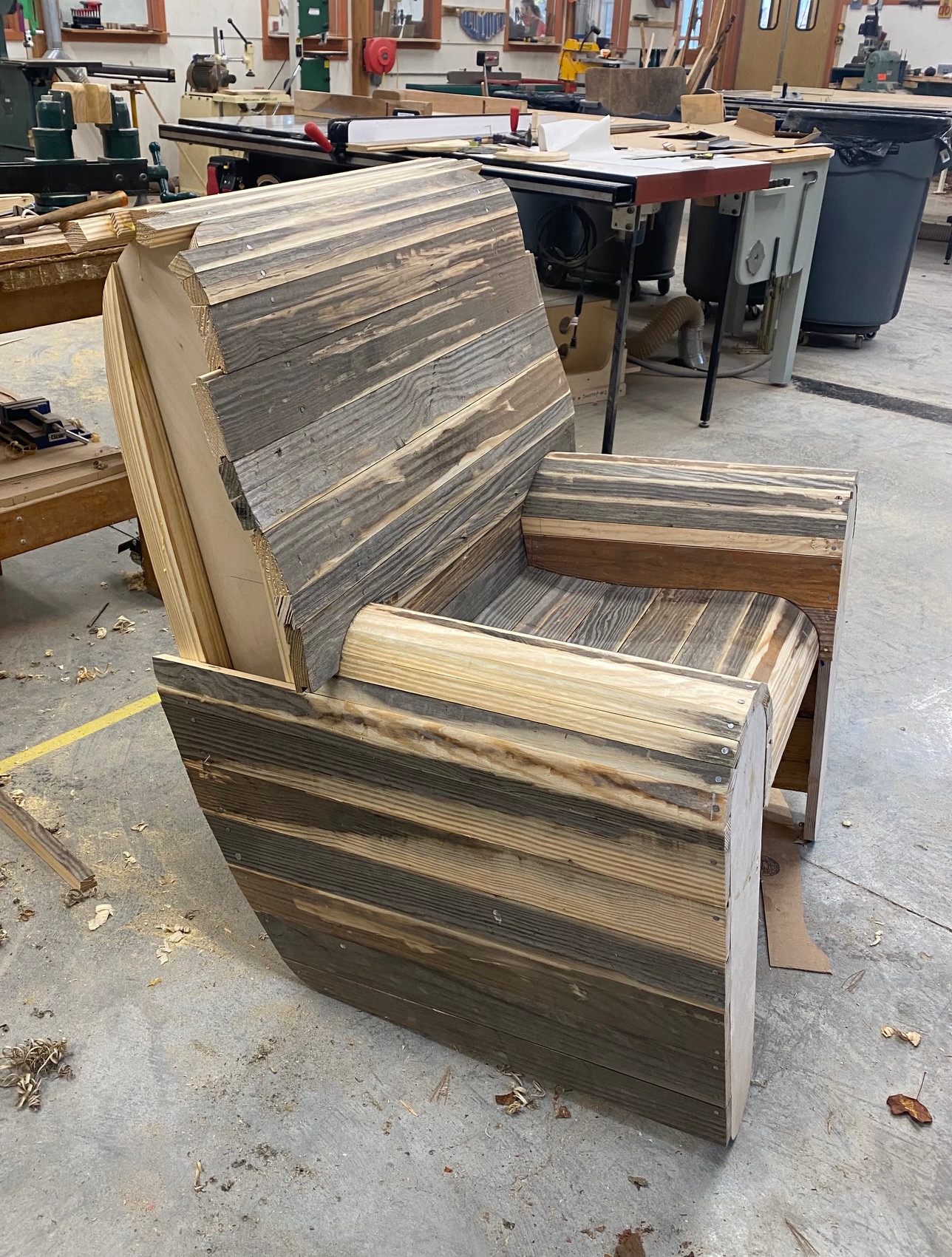
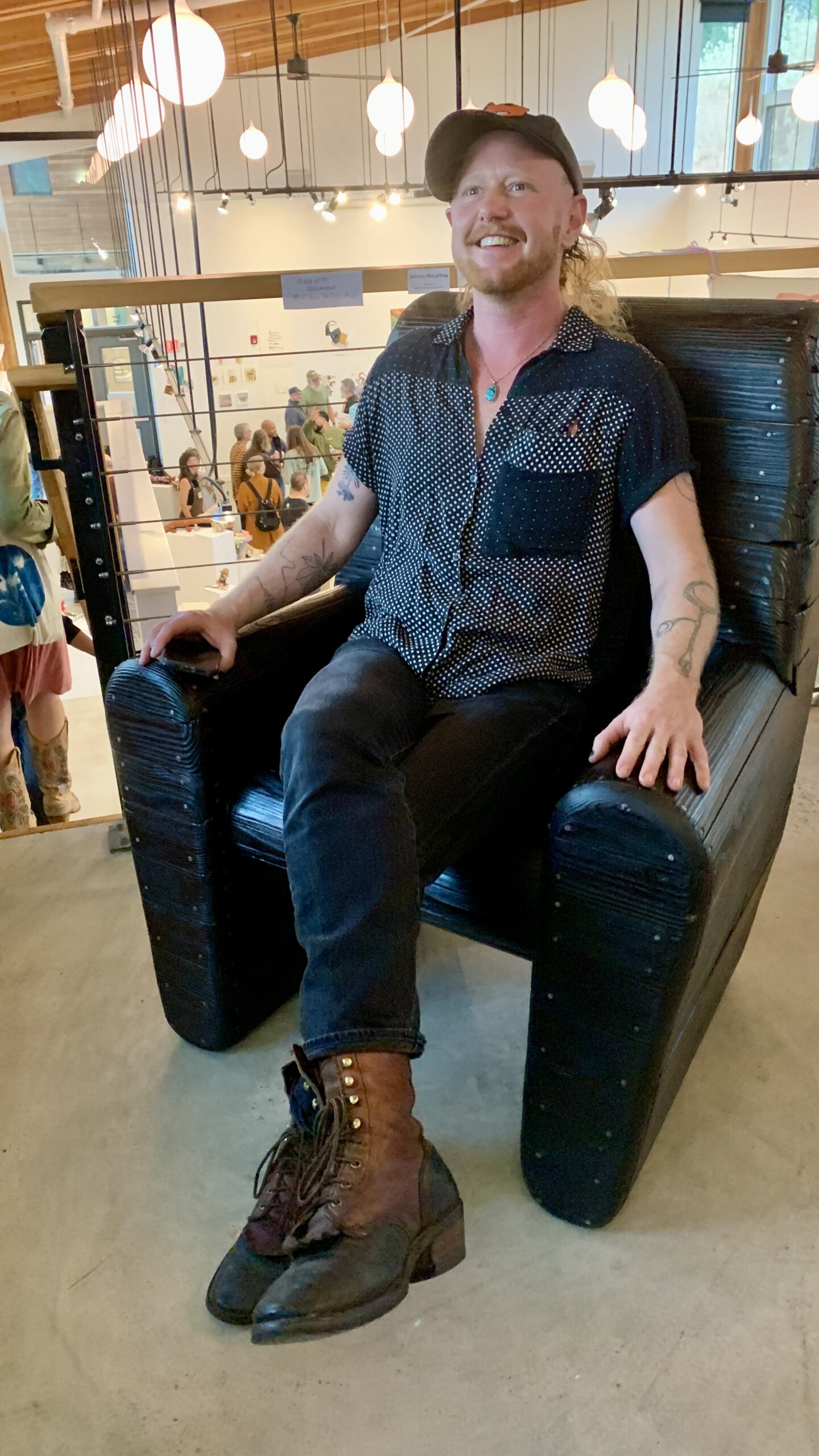 Johnny McCaffrey sits in “Doras.ext” at Show and Tell
Johnny McCaffrey sits in “Doras.ext” at Show and Tell Titled “Doras.ext,” this piece by Johnny McCaffrey was created using reclaimed pine, birch plywood, galvanized nails, and lacquer
Titled “Doras.ext,” this piece by Johnny McCaffrey was created using reclaimed pine, birch plywood, galvanized nails, and lacquer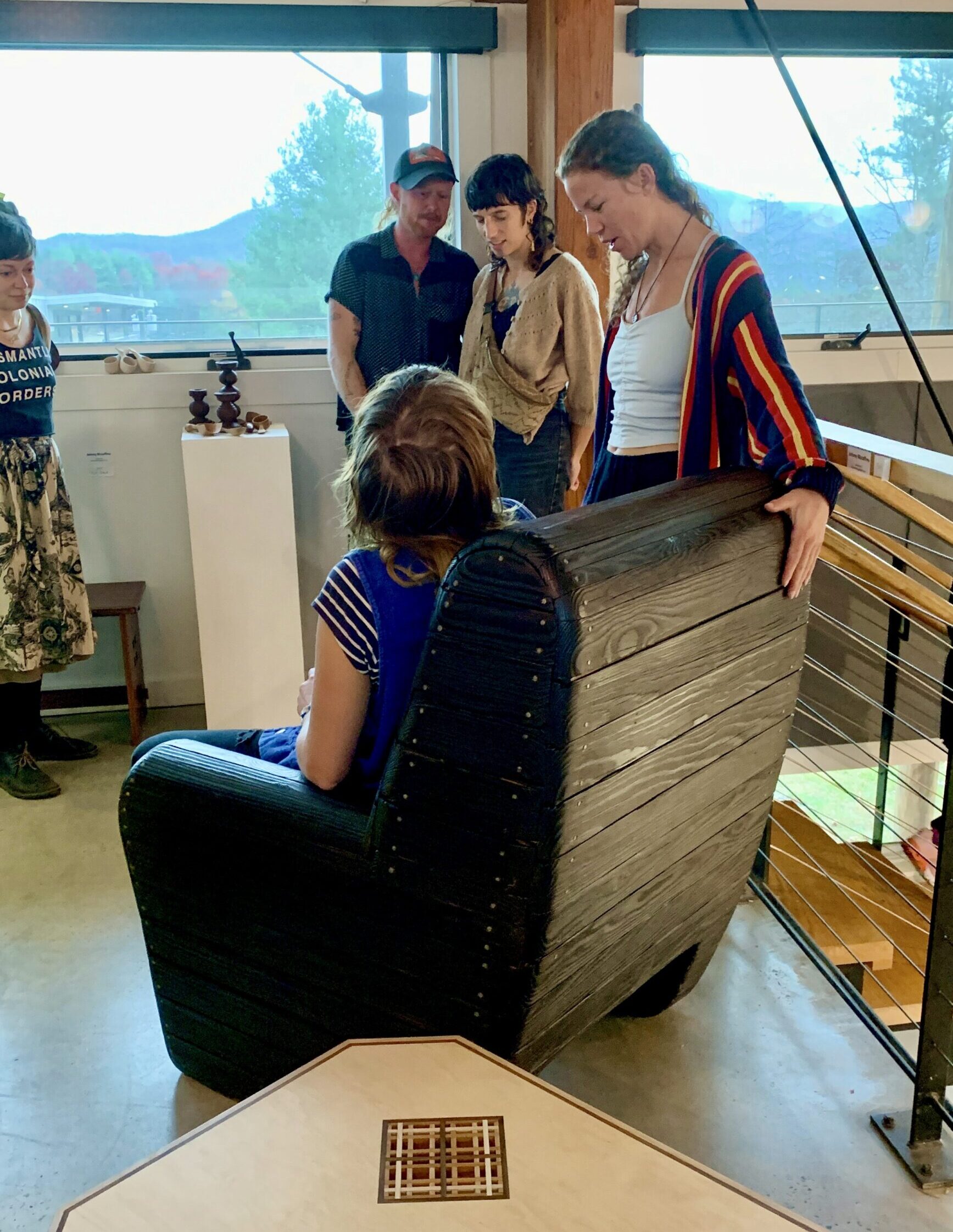
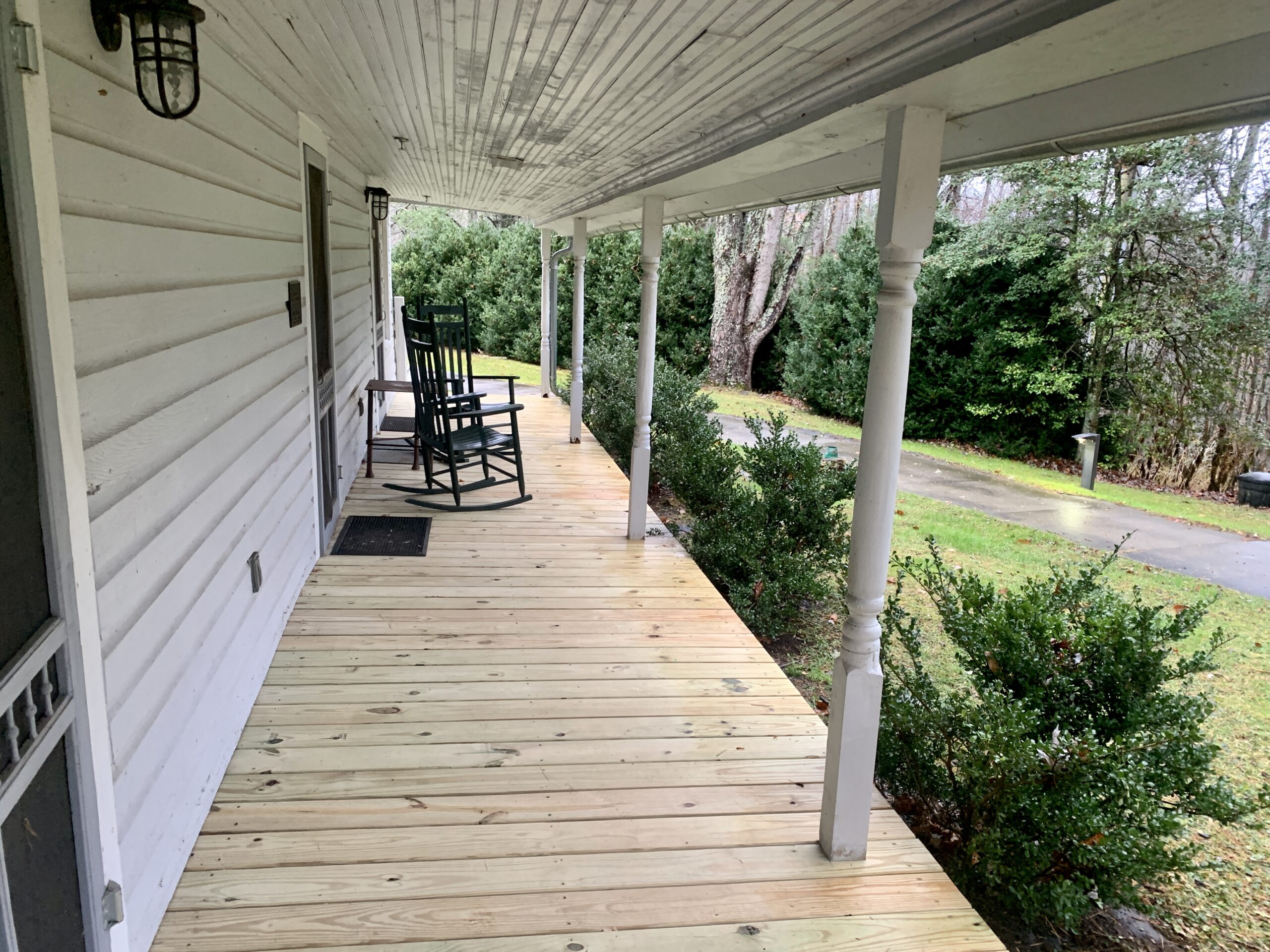 Check out the new porch at Dora’s Place.
Check out the new porch at Dora’s Place.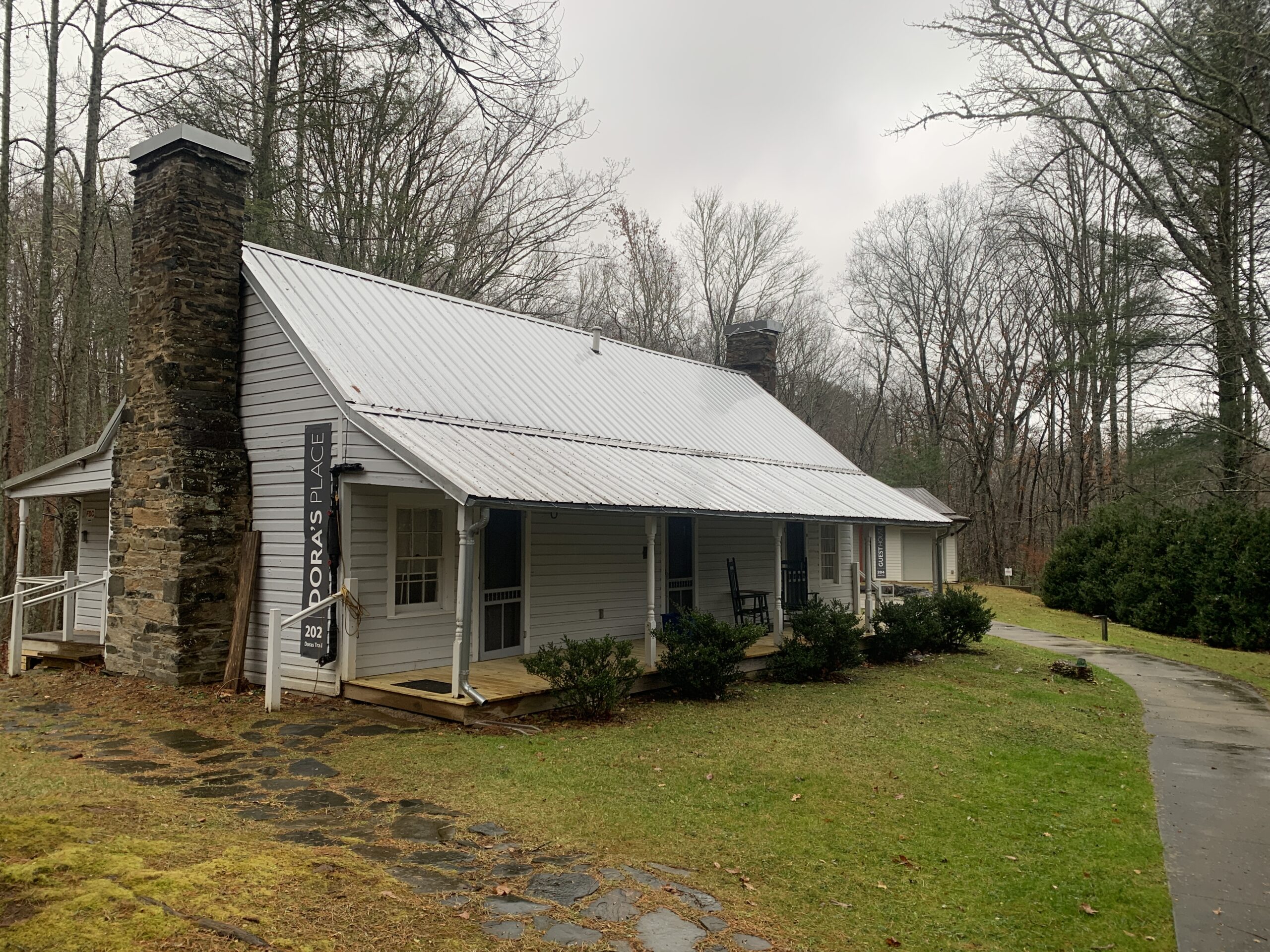
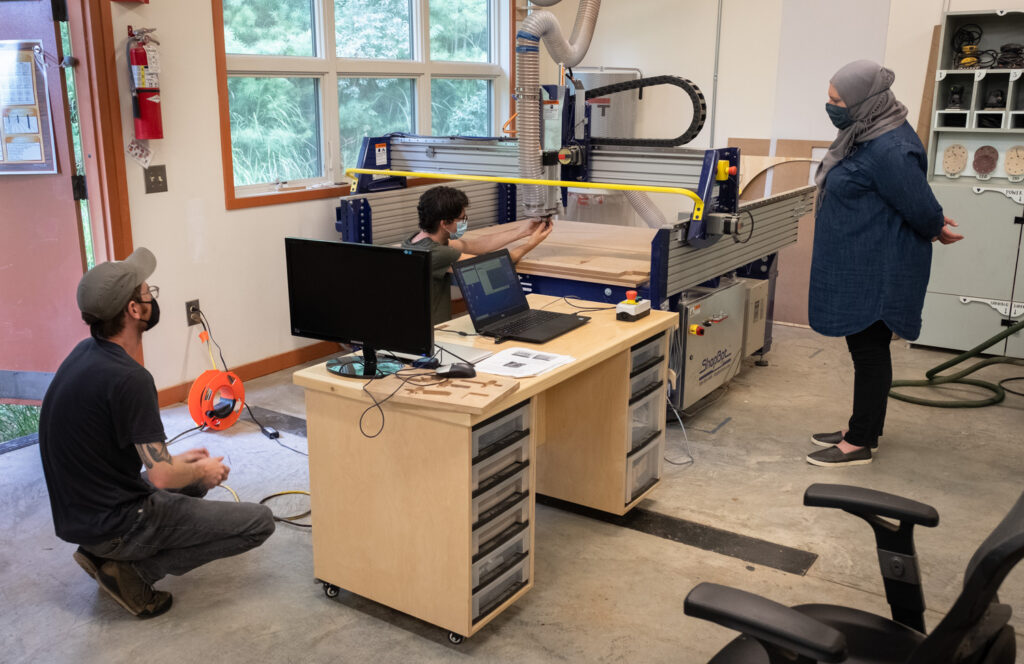 Here’s
Here’s